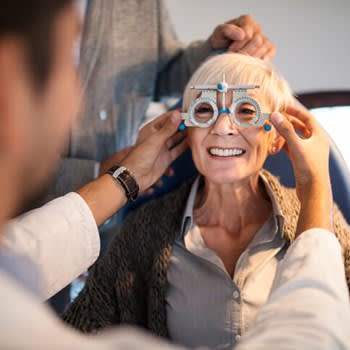Consider Wearable Technology to Detect and Prevent Falls
- iPhone users will soon have the ability to predict fall risk thanks to Apple’s latest iOS update. The update will include various other new health features also available on the Apple Watch, a device that may even be covered through your Medicare Advantage plan.
Consider Wearable Technology to Detect and Prevent Falls
Falls are the leading cause of accidents, injuries and deaths for seniors in the United States. Fortunately, they are preventable. For example, you can wear non-skid, rubber-soled, low-heeled shoes (or lace-up shoes with non-skid soles) that fully support your feet. You can stand up slowly and use an assistive device. You can use sand or salt on icy areas by your front and back door.
Another option? You can use an Apple iPhone. That’s because later this year, iPhones will include a fall prediction feature as part of the iOS15 update. The update also includes new ways to share data with your loved ones and healthcare team as well as trend analysis to help you understand changes in your health—all with simple activation on your iPhone or most Apple Watches.
The good news is that some Medicare Advantage plans now cover a variety of wearable devices, including the Apple Watch, making it easy for beneficiaries to take advantage of this helpful technology. This article addresses the latest Apple updates and how they may benefit you.
How Will the iPhone Predict Falls?
Once the iOS15 update goes into effect, the iPhone (not Apple Watch) will include a new walking steadiness feature that will be able to measure your walking speed, step length and the time both of your feet are in contact with the ground to determine your stability. More specifically, it will use custom algorithms to assess fall risk based on balance, stability and coordination through built-in motion sensors on iPhone. Then, it will issue an alert if it thinks you’re at increased risk of falling.
The walking steadiness feature can also potentially help you meet your stability goals. For example, you can choose to receive a notification when your score is Low or Very Low. The feature will then direct you to curated visual exercises based on clinically validated methods designed to increase your strength and balance.
Note that the Apple Watch Series 4 and later currently includes a fall detection feature that prompts users to call emergency services (or it automatically makes the call) if you’re immobile for approximately one minute. This is not the same as fall prediction, but it can help you if you have already fallen. Some Apple Watches also include other healthcare features including heart rate notifications, irregular rhythm notifications and an ECG app.
Can I Assume That My iPhone’s Fall Prediction Feature Will Work 100% of the Time?
Not necessarily. That’s because there are many reasons why you could be at risk for falling, none of which might pertain to your walking steadiness or lack thereof. For example, if your eyesight is poor, the iPhone may not be able to predict a sudden fall due to tripping over an object. Likewise, it can’t predict a sudden fall due to a loose rug.
What Other New Features Are Included in iOS15?
The iOS15 update will give you the ability to collect health data from various sources (i.e., your iPhone, the built-in sensors on your Apple Watch, compatible medical devices and apps that use HealthKit). For example, you may be able to use your iPhone or Apple Watch to track health metrics (e.g., blood glucose, heart rate and sleeping respiratory rate), detect new trends, store immunization records and more. Then you can share that data with a family member or caregiver if you want to do so.
Why Would I Want to Consider Sharing My Health Data?
Sharing your data means someone else can help you monitor your information and keep you healthy. For example, you may want to share your heart health data with a family member so they can keep a close eye on your status. If you have Parkinson’s disease, you may want to share mobility data with a physical therapist. Or you may want to share hours of sleep with your sleep specialist so you can have a more meaningful conversation about potential sleep disorders.
Is My Information Kept Private and Secure?
Yes, you always have full control over which data you share and with whom. Your data stays on your device and remains encrypted when in transit and while at rest on your device when locked behind a passcode, Face ID or Touch ID. Apple does not have access to any information.
How Do I Know Whether My Medicare Advantage Plan Will Cover an Apple Watch?
The best bet is to contact your specific plan and ask whether an Apple Watch or other sensors and wearables are a covered benefit. If it is a covered benefit, also inquire how to submit a claim for reimbursement after you purchase the device. You’ll likely need to submit a form and provide proof of purchase. The cost of an Apple Watch starts at $399.





